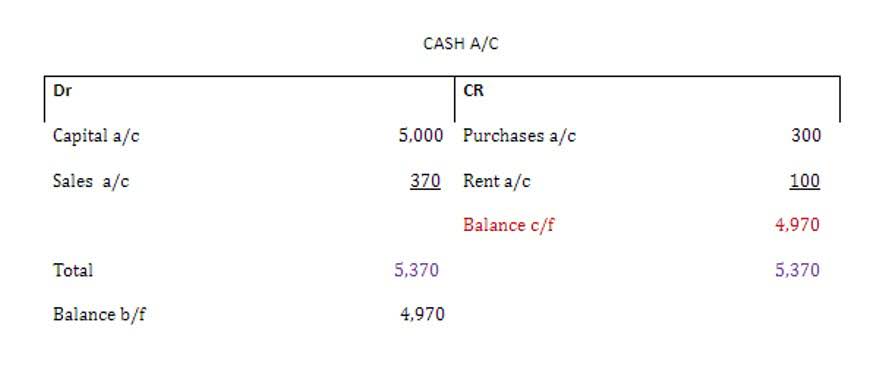
This may also be done by using industry-specific data to estimate the asset’s value. It just needs to prospectively change the estimated amount to book to depreciate each month. Businesses must comply with laws governing specific asset types, especially those posing environmental risks like hazardous materials or electronic waste. Adhering to these guidelines ensures both legal compliance and environmental safety. Companies with multiple exclusive fixed assets including medical kits, vehicles, and other heavy machinery, may consider purchasing residual value insurance.
- So, before you can calculate the scrap value, you must first estimate the depreciation rate.
- After the useful life, these computers are obsolete and have no salvage value.
- After the usable term has passed, the equipment will no longer perform properly and must be sold.
- So, in this article, we will look at salvage value, formula, and how you can calculate it.
- Now, you are ready to record a depreciation journal entry towards the end of the accounting period.
Residual Value Explained, With Calculation and Examples
Different methods of asset depreciation are used to more accurately reflect the depreciation and current value of an asset. A company may elect to use one depreciation method over another in order to gain tax or cash flow advantages. Salvage value represents the amount that an asset is expected to be worth after it has been fully depreciated or used up. Salvage value is an important concept in accounting, finance, and asset management, influencing decisions related to depreciation, asset valuation, and overall financial planning. Salvage value is estimated based on factors like the asset’s original cost, expected useful life, anticipated wear and tear, and potential market value at the end of its life.

Barcode based Asset Management
- The advent of AI and sophisticated software has revolutionized how we estimate and utilize salvage values.
- CFI is on a mission to enable anyone to be a great financial analyst and have a great career path.
- Methods for calculating salvage value include taking a percentage of the cost, working with an appraiser, and using historical data.
- Additionally, using leasing calculation methods for machinery can provide insight into the potential benefits of leasing over purchasing.
- Salvage value, also known as residual value, is a significant factor in calculating an asset’s depreciation schedule.
- If it is too difficult to determine a salvage value, or if the salvage value is expected to be minimal, then it is not necessary to include a salvage value in depreciation calculations.
A higher salvage value can enhance the NPV, making an investment more attractive. Salvage value is a key element in financial planning, representing the estimated residual worth of an asset at the end of its useful life. This figure is essential for calculating depreciation and making informed investment decisions, impacting both short-term budgeting and long-term strategic planning.

Practical examples of salvage value calculation
This means, from an accounting perspective, the value of the car decreases by $3,000 each year. At the end of 5 years, its book value will be the salvage value, which is $5,000. Charlene Rhinehart is a CPA , CFE, chair of an AI in Accounting Illinois CPA Society committee, and has a degree in accounting and finance from DePaul University. Get instant access to video lessons taught by experienced investment bankers.

2.1.3 Intangible assets used in research and development (IPR&D)

In this example, the company is expensing $833.33 from the asset’s value every year for five years until it reaches its salvage value of $1,000. This method ensures a consistent depreciation expense amount each year and provides equalization in depreciation expenses over the entire useful life. The first method involves estimating that the salvage https://marinaviewresidencessgcondo.com/revenue-definition-calculator-formula-types-and/ value is a certain percentage of the asset’s original cost. For instance, if a company assumes that the salvage value is 20% of the asset’s cost, it would calculate the expected salvage value by multiplying the original cost by 20%. This means that the computer will be used by Company A for 4 years and then sold afterward. The company also estimates that they would be able to sell the computer at a salvage value of $200 at the end of 4 years.
IoT Based Asset Tracking
The idea is rooted in the understanding that assets lose value over time because of wear and tear, technological obsolescence, or market saturation. In this example, even though the car was purchased for $20,000, it loses value over time due to wear and tear, changes in market demand, technological advancements, and other factors. However, it doesn’t become worthless; it still retains a salvage value of $5,000 after 5 years, which is what you expect you could get if you what is salvage value in accounting were to sell it at that time. Starting from the original cost of purchase, we must deduct the product of the annual depreciation expense and the number of years. Salvage value is important in accounting as it displays the value of the asset on the organization’s books once it completely expenses the depreciation. It exhibits the value the company expects from selling the asset at the end of its useful life.
- Whether dealing with vehicles, equipment, or property, businesses must consider depreciation, maintenance, and market conditions when determining an asset’s final worth.
- A company may also choose to go with this method if it offers them tax or cash flow advantages.
- Understanding these formulas facilitates more accurate financial predictions and asset management.
- Regular maintenance and upgrades can extend the useful life, while technological advancements may shorten it.
- You also need to know how long the item will last, i.e., the asset’s useful life.
- Get instant access to video lessons taught by experienced investment bankers.
Straight-Line Method
By integrating financial data and automating calculations, Deskera ERP ensures accuracy and consistency in determining salvage values across various asset categories. Assumptions include setting it to zero if minimal, using historical data or industry averages, and considering the asset’s condition and potential for resale or parting out at end-of-life. External factors like economic conditions and regulatory changes can also impact the salvage value. How different factors have impacted the salvage value of specific assets in real-world scenarios.

